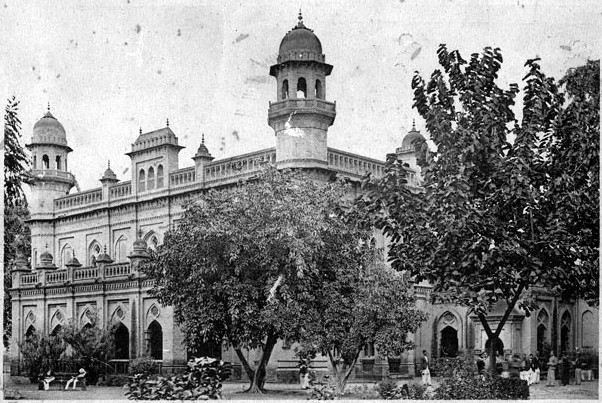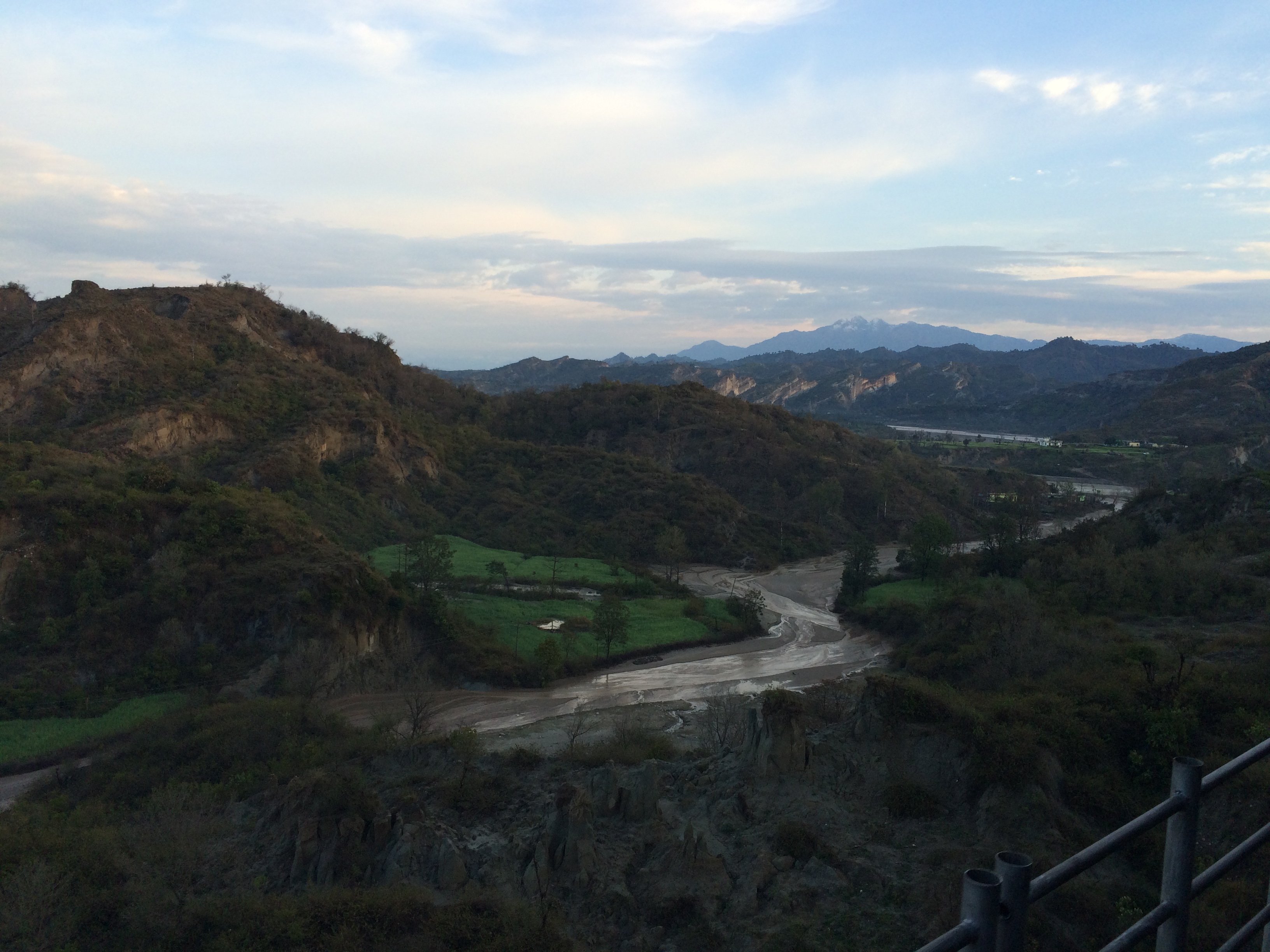|
Ajneya
Sachchidananda Hirananda Vatsyayan (7 March 1911 – 4 April 1987), popularly known by his pen name Agyeya (also transliterated Ajneya, meaning 'the unknowable'), was an Indian writer, poet, novelist, literary critic, journalist, translator and revolutionary in Hindi language. He pioneered modern trends in Hindi poetry, as well as in fiction, criticism and journalism. He is regarded as the pioneer of the ''Prayogavaad'' (experimentalism) movement in modern Hindi literature. Son of a renowned archaeologist Hiranand Sastri, Agyeya was born in Kasia, a small town near Kushinagar in Uttar Pradesh. He took active part in the Indian freedom struggle and spent several years in prison for his revolutionary activities against British colonial rule. He edited the ''Saptak'' series which gave rise a new trends in Hindi poetry, known as ''Nayi Kavita''. He edited several literary journals, and launched his own Hindi language weekly ''Dinaman'', which set new standard and trends in Hindi ... [...More Info...] [...Related Items...] OR: [Wikipedia] [Google] [Baidu] |
Hindi Literature
Hindi literature ( hi, हिन्दी साहित्य, translit=hindī sāhitya) includes literature in the various Hindi language which have writing systems. Earliest forms of Hindi literature are attested in poetry of Apabhraṃśa like Awadhi, Magadhi, Ardhamagadhi and Marwari languages. Hindi literature is composed in three broad styles- गद्य (Gadya-prose), पद्य( Padya- poetry) and चम्प्पू (Campū -Prosimetrum.) In terms of historical development, it is broadly classified into five prominent forms (genres) based on the date of production. They are: * Ādi Kāl /Vīr-Gāthā Kāl (आदि काल/वीरगाथा काल) -- '' prior to & including 14th century CE.">u>prior to & including 14th century CE./u>'' This period was marked by Poems extolling brave warriors. * * Bhakti Kāl (भक्ति काल) -''- 4th–18th century CE./u>'' Prominent genre in this period was Poems of Devotion due to ... [...More Info...] [...Related Items...] OR: [Wikipedia] [Google] [Baidu] |
Kapila Vatsyayan
Kapila Vatsyayan (25 December 1928 – 16 September 2020) was a leading scholar of Indian classical dance, art, architecture, and art history. She served as a member of parliament and bureaucrat in India, and also served as the founding director of the Indira Gandhi National Centre for the Arts. In 1970, Vatsyayan received the Sangeet Natak Akademi Fellowship, the highest honour conferred by the Sangeet Natak Akademi, India's national academy for music, dance and drama; this was followed by the Lalit Kala Akademi Fellowship, the highest honour in the fine arts conferred by Lalit Kala Akademi, India's national academy for fine arts in 1995. In 2011, the Government of India bestowed upon her the Padma Vibhushan, India's second highest civilian honour. Early life and background She was born in Delhi to Ram Lal and Satyawati Malik. She earned an MA in English literature from Delhi University. Thereafter, she completed a second MA in Education at the University of Michigan, Ann A ... [...More Info...] [...Related Items...] OR: [Wikipedia] [Google] [Baidu] |
Dinaman
''Dinaman'' was a Hindi language weekly magazine founded in 1965. It was published in New Delhi New Delhi (, , ''Naī Dillī'') is the Capital city, capital of India and a part of the NCT Delhi, National Capital Territory of Delhi (NCT). New Delhi is the seat of all three branches of the government of India, hosting the Rashtrapati B .... The newsweekly was started by Sachchidananda Hirananda Vatsyayan 'Ajneya', a pioneer of modern Hindi poetry and writing. His Assistant Editors were Raghuvir Sahay, a prominent Hindi author and a then unknown Manohar Shyam Joshi, who went on to become the editor of Saptahik Hindustan and a pathbreaking writer himself. Subsequent editors of the magazine included the Hindi poet Raghuvir Sahay, K.L. Nandan, and Satish Jha. ''Dinaman'' was published by Bennett, Coleman & Co. Ltd. (now The Times Group). Some of its staff members achieved national political stature. Shrikant Verma, a poet, was nominated to India's parliamentary Upper Hous ... [...More Info...] [...Related Items...] OR: [Wikipedia] [Google] [Baidu] |
Kushinagar District
Kushinagar is a district of the state of Uttar Pradesh in India situated in the easternmost part of the state. It has the administrative headquarters at Ravindra Nagar Dhoos. The district is named such after the town Kushinagar, a Buddhist pilgrimage site where Gautama Buddha attained ''parinirvana'' in the 5th century BCE. Since the independence of India, Kushinagar district was a part of Deoria District and came into existence on 13 May 1994 as a separate district division. It was earlier known as Padrauna and thereafter was renamed Kushinagar on 19 June 1997. Location Kushinagar District is bounded on the northeast by West Champaran and Gopalganj districts of Bihar, on the south by Deoria District and on the west by Gorakhpur and Maharajganj districts. It is part of Gorakhpur Division. Economy In 2006 the Ministry of Panchayati Raj named Kushinagar one of the country's 250 most backward districts (out of a total of 640). It is one of the 34 districts in Uttar Pradesh curr ... [...More Info...] [...Related Items...] OR: [Wikipedia] [Google] [Baidu] |
Hindi
Hindi (Devanāgarī: or , ), or more precisely Modern Standard Hindi (Devanagari: ), is an Indo-Aryan languages, Indo-Aryan language spoken chiefly in the Hindi Belt region encompassing parts of North India, northern, Central India, central, East India, eastern, and Western India, western India. Hindi has been described as a standard language, standardised and Sanskrit#Influence on other languages, Sanskritised Register (sociolinguistics), register of the Hindustani language, which itself is based primarily on the Old Hindi, Khariboli dialect of Delhi and neighbouring areas of North India. Hindi, written in the Devanagari script, is one of the two official languages of the Government of India, along with Indian English, English. It is an languages with official status in India, official language in nine states and three union territory, union territories and an additional official language in three other states. Hindi is also one of the 22 languages with official status in ... [...More Info...] [...Related Items...] OR: [Wikipedia] [Google] [Baidu] |
Ootacamund
Ooty (), officially known as Udhagamandalam (also known as Ootacamund (); abbreviated as Udhagai), is a city and a municipality in the Nilgiris district of the South Indian state of Tamil Nadu. It is located north west of Coimbatore and south of Mysore and is the headquarters of the Nilgiris district. It is a popular hill station located in the Nilgiri Hills. It is popularly called the Queen of Hill Stations. It was the summer capital of the Madras Presidency. Originally occupied by the Toda people, the area came under the rule of the East India Company at the end of the 18th century. The economy is based on tourism and agriculture, along with the manufacture of medicines and photographic film. The town is connected by the Nilgiri ghat roads and Nilgiri Mountain Railway. Its natural environment attracts tourists and it is a popular summer destination. In 2011, the town had a population of 88,430. Ootacamund was rated the best hill station in means of hospitality and ... [...More Info...] [...Related Items...] OR: [Wikipedia] [Google] [Baidu] |
Nalanda
Nalanda (, ) was a renowned '' mahavihara'' ( Buddhist monastic university) in ancient Magadha (modern-day Bihar), India.Nalanda University Government of India Considered by historians to be the world's first residential university and among the greatest centers of learning in the ancient world, it was located near the city of Rajagriha (now Rajgir) and about southeast of Pataliputra (now Patna). Operating from 427 until 1197 CE, Nalanda played a vital role in promoting the patronage of arts and academics during the 5th and 6th century CE, a period that has since been described as the " [...More Info...] [...Related Items...] OR: [Wikipedia] [Google] [Baidu] |
Patna
Patna ( ), historically known as Pataliputra, is the capital and largest city of the state of Bihar in India. According to the United Nations, as of 2018, Patna had a population of 2.35 million, making it the 19th largest city in India. Covering and over 2.5 million people, its urban agglomeration is the 18th largest in India. Patna serves as the seat of Patna High Court. The Buddhist, Hindu and Jain pilgrimage centres of Vaishali, Rajgir, Nalanda, Bodh Gaya and Pawapuri are nearby and Patna City is a sacred city for Sikhs as the tenth Sikh Guru, Guru Gobind Singh was born here. The modern city of Patna is mainly on the southern bank of the river Ganges. The city also straddles the rivers Sone, Gandak and Punpun. The city is approximately in length and wide. One of the oldest continuously inhabited places in the world, Patna was founded in 490 BCE by the king of Magadha. Ancient Patna, known as Pataliputra, was the capital of the Magadh Empire thro ... [...More Info...] [...Related Items...] OR: [Wikipedia] [Google] [Baidu] |
Jammu
Jammu is the winter capital of the Indian union territory of Jammu and Kashmir. It is the headquarters and the largest city in Jammu district of the union territory. Lying on the banks of the river Tawi, the city of Jammu, with an area of , is surrounded by the Himalayas in the north and the northern-plains in the south. Jammu is the second most populous city of the union territory. Three battles have been fought in the city: first by the founder Raja Mal Dev against Timur in Battle of Jammu (1399), second by Sardar Bhag Singh against Mughal army in Battle of Jammu (1712) and the third by Mian Dido & Maharaja Gulab Singh against Ranjit Singh's army in Battle of Jammu (1808). Known as the ''City of Temples'' for its ancient temples and Hindu shrines, Jammu is the most visited place in the union territory. Jammu city shares its borders with the neighbouring Samba district. Etymology According to local tradition, Jammu is named after its founder, Raja Jambulochan, who ... [...More Info...] [...Related Items...] OR: [Wikipedia] [Google] [Baidu] |
Srinagar
Srinagar (English: , ) is the largest city and the summer capital of Jammu and Kashmir (union territory), Jammu and Kashmir, India. It lies in the Kashmir Valley on the banks of the Jhelum River, a tributary of the Indus, and Dal Lake, Dal and Anchar Lake, Anchar lakes. The city is known for its natural environment, gardens, waterfronts and houseboats. It is known for traditional Kashmiri handicrafts like the Kashmir shawl (made of Pashmina (material), pashmina and cashmere wool), and also dried fruits. It is the List of cities in India by population, 31st-most populous city in India, the northernmost city in India to have over one million people, and the second-largest metropolitan area in the Himalayas (after Kathmandu, Nepal). Origin of name The earliest records, such as Kalhana's ''Rajatarangini'', mentions the Sanskrit name ''shri-nagara'' which have been interpreted distinctively by scholars in two ways: one being ''sūrya-nagar'', meaning "''City of the Surya''" (trans ... [...More Info...] [...Related Items...] OR: [Wikipedia] [Google] [Baidu] |
Lucknow
Lucknow (, ) is the capital and the largest city of the Indian state of Uttar Pradesh and it is also the second largest urban agglomeration in Uttar Pradesh. Lucknow is the administrative headquarters of the eponymous district and division. Having a population of 2.8 million as per 2011 census, it is the eleventh most populous city and the twelfth-most populous urban agglomeration of India. Lucknow has always been a multicultural city that flourished as a North Indian cultural and artistic hub, and the seat of power of Nawabs in the 18th and 19th centuries. It continues to be an important centre of governance, administration, education, commerce, aerospace, finance, pharmaceuticals, technology, design, culture, tourism, music and poetry. The city stands at an elevation of approximately above sea level. Lucknow city had an area of till December 2019, when 88 villages were added to the municipal limits and the area increased to . Bounded on the east by Barabanki, on th ... [...More Info...] [...Related Items...] OR: [Wikipedia] [Google] [Baidu] |
Archaeologist
Archaeology or archeology is the scientific study of human activity through the recovery and analysis of material culture. The archaeological record consists of Artifact (archaeology), artifacts, architecture, biofact (archaeology), biofacts or ecofacts, archaeological site, sites, and cultural landscapes. Archaeology can be considered both a social science and a branch of the humanities. It is usually considered an independent academic discipline, but may also be classified as part of anthropology (in North America – the four-field approach), history or geography. Archaeologists study human prehistory and history, from the development of the first stone tools at Lomekwi in East Africa 3.3 million years ago up until recent decades. Archaeology is distinct from palaeontology, which is the study of fossil remains. Archaeology is particularly important for learning about prehistoric societies, for which, by definition, there are no written records. Prehistory includes ove ... [...More Info...] [...Related Items...] OR: [Wikipedia] [Google] [Baidu] |









.jpg)